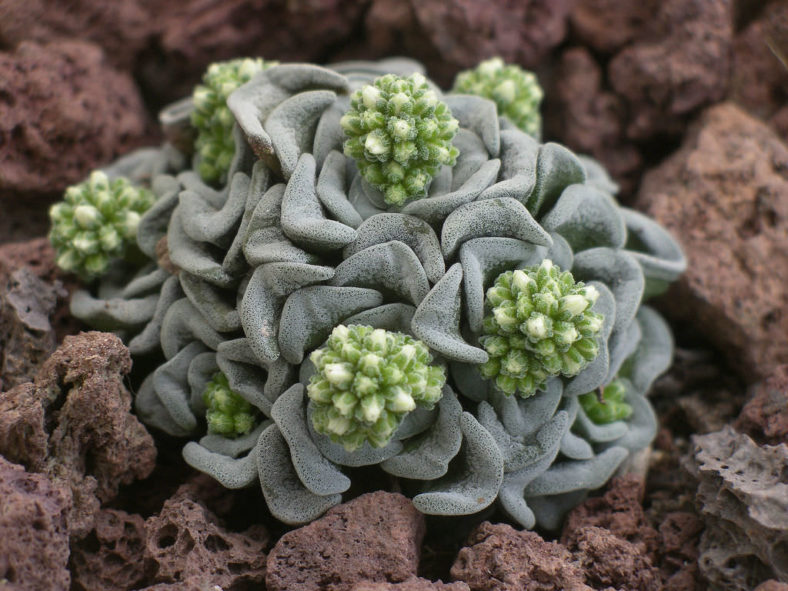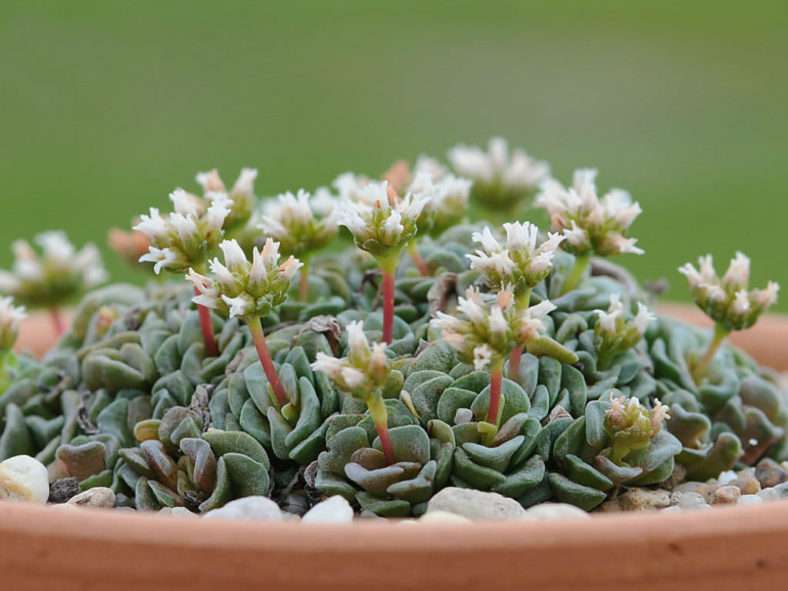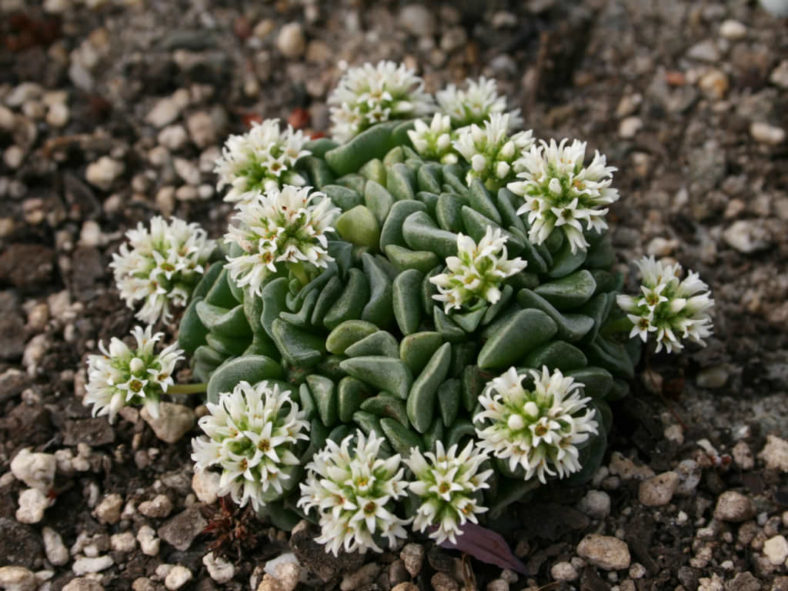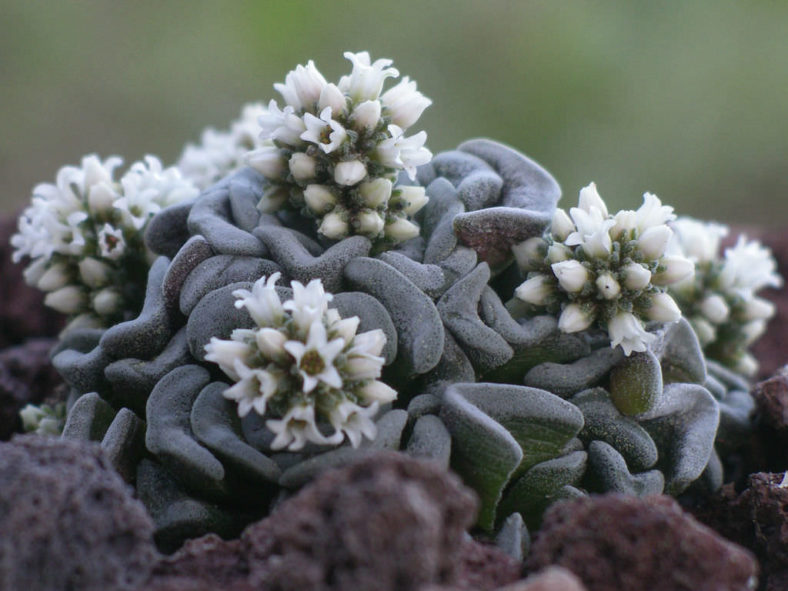Scientific Name
Crassula 'Celia'
Scientific Classification
Family: Crassulaceae
Subfamily: Crassuloideae
Genus: Crassula
Origin
Crassula 'Celia' is a hybrid created by Dick Wright and results from a cross between Crassula mesembrianthemopsis and Crassula susannae.
Description
Crassula 'Celia' is a slow-growing succulent that forms beautiful, small clumps of basal rosettes. There are two different-looking clones. One has narrow, thick leaves, triangular at the tips, and an inflorescence on a short stalk. The other form has flat leaves that are more round at the tips, and the inflorescence has no visible stalk, so it is tighter on the rosette.
The flower buds develop in the fall and take quite some time before they bloom. In cool temperatures, the inflorescences continue to bloom for many weeks.

How to Grow and Care for Crassula 'Celia'
Hardiness: USDA hardiness zones 9b to 11b: from 25°F (-3.9°C) to 50°F (10°C).
Crassulas are easy to grow but susceptible to mealybugs and fungal diseases. As with all succulents, overwatering is sure to be fatal, so err on the side of being too dry rather than too wet. Never let your plant sit in water. If you water from beneath by allowing the plant to sit in a saucer, pour off any excess water after a few minutes.
These succulents are generally started by division, offsets, or leaf cuttings. Crassulas can be easily propagated from a single leaf. Sprout leaves by placing them into a potting mix for succulents, then cover the dish until they sprout.
Repot as needed, preferably during the warm season. To repot your Crassula, ensure the soil is dry before repotting, then gently remove the pot. Knock away the old soil from the roots, removing any rotted or dead roots. Treat any cuts with a fungicide. Place the plant in its new pot and backfill it with potting soil, spreading the roots as you repot. Leave the plant dry for a week or so, then begin to water lightly to reduce the risk of root rot.
Learn more at How to Grow and Care for Crassula.
Links
- Back to genus Crassula
- Succupedia: Browse succulents by Scientific Name, Common Name, Genus, Family, USDA Hardiness Zone, Origin, or cacti by Genus
Photo Gallery
Click on a photo to see a larger version.


